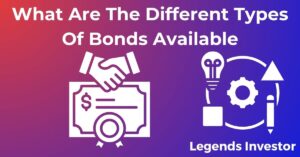Introduction to Bonds and Their Value Measures
Investing in bonds is a cornerstone of many financial portfolios, offering stability and income. Understanding how to evaluate bonds through various metrics is essential for making informed investment decisions. This article will explore key bond valuation metrics, focusing on the coupon rate and yield to maturity (YTM), and discuss their roles in investment strategy.
Explanation of Bonds as Investment Vehicles
What Are Bonds?
Bonds are debt securities issued by entities such as governments, corporations, or municipalities to raise capital. When you purchase a bond, you are lending money to the issuer in exchange for periodic interest payments and the return of the principal amount at maturity. Bonds are often sought after for their predictable income stream and lower risk compared to stocks.
Importance of Understanding Different Valuation Metrics
To effectively evaluate and compare bonds, investors need to understand various valuation metrics. These metrics help determine the attractiveness of a bond relative to other investments and the bond’s overall performance potential.
Brief Overview of Coupon Rate and Yield to Maturity (YTM)
Coupon Rate
The coupon rate is the annual interest payment a bondholder receives as a percentage of the bond’s face value. It is fixed and does not change over the life of the bond.
Yield to Maturity (YTM)
Yield to Maturity represents the total return an investor can expect if the bond is held until maturity. YTM accounts for the bond’s current market price, coupon payments, and the time remaining until maturity.
Breaking Down the Bond Coupon Rate
Definition of a Bond’s Coupon Rate
The coupon rate is the interest rate paid by the bond issuer on the bond’s face value. For example, a bond with a face value of $1,000 and a coupon rate of 5% will pay $50 annually.
How the Coupon Rate Is Determined and Its Fixed Nature
The coupon rate is set at the time of issuance and remains fixed throughout the bond’s life. It reflects the interest rate environment at the time the bond is issued and the issuer’s credit quality. Unlike YTM, the coupon rate does not fluctuate with market conditions.
The Role of the Coupon Rate in Investor Income
The coupon rate determines the regular income bondholders receive. This fixed income can be a stable source of cash flow, which is particularly attractive to income-focused investors.
Deciphering Yield to Maturity
Explanation of Yield to Maturity (YTM)
Yield to Maturity is a comprehensive measure of a bond’s return. It represents the annualized return an investor will earn if the bond is held to maturity, considering all coupon payments and the return of the principal. YTM provides a more complete picture of a bond’s profitability compared to the coupon rate alone.
How YTM Encapsulates the Total Expected Return on a Bond
YTM takes into account the bond’s current market price, coupon payments, and the time remaining until maturity. It provides a single figure that reflects the bond’s total return potential, incorporating both the fixed coupon payments and any capital gains or losses realized at maturity.
The Process of Calculating YTM
Calculating YTM involves solving a complex equation that equates the present value of the bond’s future cash flows (coupons and face value) to its current market price. The formula is:
P=C(1+YTM)+C(1+YTM)2+⋯+C+F(1+YTM)nP = \frac{C}{(1 + YTM)} + \frac{C}{(1 + YTM)^2} + \cdots + \frac{C + F}{(1 + YTM)^n}
Where:
- PP = Current bond price
- CC = Annual coupon payment
- FF = Face value
- nn = Number of years to maturity
- YTMYTM = Yield to Maturity
Due to its complexity, YTM is often calculated using financial calculators or software.
Comparing Coupon Rate and YTM: The Core Differences
Understanding the Fixed vs. Variable Nature of These Metrics
- Coupon Rate: Fixed and determined at issuance. Remains constant throughout the bond’s life.
- YTM: Variable and dependent on current market conditions. It changes as the bond’s price fluctuates and as interest rates change.
How Market Conditions Affect YTM but Not Coupon Rate
Market conditions, such as changes in interest rates, impact YTM because bond prices fluctuate with interest rate movements. If interest rates rise, bond prices fall, leading to an increase in YTM. Conversely, if interest rates fall, bond prices rise, reducing YTM.
The Impact of Bond Price Changes on YTM
YTM is inversely related to bond price changes. When bond prices decrease, YTM increases, reflecting a higher return relative to the bond’s lower price. When bond prices increase, YTM decreases, indicating a lower return relative to the bond’s higher price.
Practical Examples: Coupon Rate vs. Yield to Maturity
Illustrative Scenarios Showing Differences in Outcomes
- Scenario 1: A bond with a 5% coupon rate is purchased at face value ($1,000). The YTM is also 5% because the bond is trading at its face value, and the coupon rate equals the YTM.
- Scenario 2: The same bond is now trading at $950. The coupon rate remains 5%, but the YTM increases because the investor is buying the bond at a discount and will receive the full $1,000 face value at maturity.
Impact on Decision-Making for Investors
Investors use coupon rate to assess the income they will receive, while YTM helps evaluate the bond’s overall return, including potential capital gains or losses. Understanding both metrics allows investors to make better comparisons between bonds and assess their investment potential.
Real-World Implications of These Differences
In a rising interest rate environment, bond prices generally fall, increasing YTM. Investors focusing solely on coupon rates might overlook the potential for higher overall returns if they buy bonds at a discount. Conversely, investors focusing on YTM might miss the steady income provided by higher coupon rates.
The Investor’s Perspective: Why Both Measures Matter
Role of Coupon Rate and YTM in Investment Strategy Development
- Coupon Rate: Provides a predictable income stream, which is valuable for income-focused investors or those seeking stability.
- YTM: Offers a comprehensive view of the bond’s total return potential, considering market price fluctuations and time to maturity. It is crucial for evaluating bonds in a changing interest rate environment.
How Investors Use These Measures to Assess Risk and Return
Investors use coupon rates to gauge income stability and YTM to assess the overall return, considering the bond’s current price and market conditions. Both measures help investors understand the trade-offs between income stability and potential capital gains or losses.
Importance of Considering Both Metrics in Bond Investment
Evaluating both the coupon rate and YTM provides a more complete picture of a bond’s performance and investment potential. Investors should consider both metrics when making decisions to balance income needs with return expectations and market conditions.
When Market Conditions Change: The Dynamics of Coupon Rate and YTM
Effect of Interest Rate Changes on YTM
Interest rate changes impact YTM as bond prices adjust to reflect new market conditions. Rising interest rates lead to lower bond prices and higher YTM, while falling interest rates result in higher bond prices and lower YTM.
The Relationship Between Bond Price Fluctuations and YTM
Bond prices and YTM have an inverse relationship. As bond prices fluctuate, YTM adjusts to reflect the bond’s new price. Investors need to monitor both metrics to understand how market conditions affect their bond investments.
The Stability of Coupon Rates Amidst Market Volatility
Coupon rates remain fixed regardless of market fluctuations. This stability provides a consistent income stream, even when bond prices and YTM vary due to market conditions.
The Impact of Time to Maturity on Bond Valuation
Short-Term vs. Long-Term Bond Strategies
- Short-Term Bonds: Typically less sensitive to interest rate changes, offering lower risk and lower yields. They are suitable for investors seeking stability and lower exposure to interest rate fluctuations.
- Long-Term Bonds: More sensitive to interest rate changes, with higher potential yields but increased risk. They are suitable for investors seeking higher returns and willing to accept greater price volatility.
How YTM Adjusts as the Bond Approaches Maturity
As a bond approaches maturity, its YTM converges with its coupon rate if it is held at face value. The bond’s price will approach its face value, and any differences between YTM and coupon rate will diminish.
Considering Time in the Calculus of Coupon Rate and YTM
Time to maturity affects the bond’s sensitivity to interest rate changes and the calculation of YTM. Investors should consider the bond’s maturity when evaluating its potential return and risk.
Conclusion: Making Informed Bond Investment Choices
Understanding the differences between coupon rate and YTM is crucial for making informed bond investment decisions. The coupon rate provides a fixed measure of income, while YTM offers a comprehensive view of the bond’s total return potential, considering market conditions and price fluctuations. By evaluating both metrics, investors can better assess the performance and suitability of bonds in their portfolios.
For personalized advice and to navigate complex bond investments effectively, investors are encouraged to consult with financial professionals. They can provide tailored insights and strategies based on individual financial goals and market conditions.



